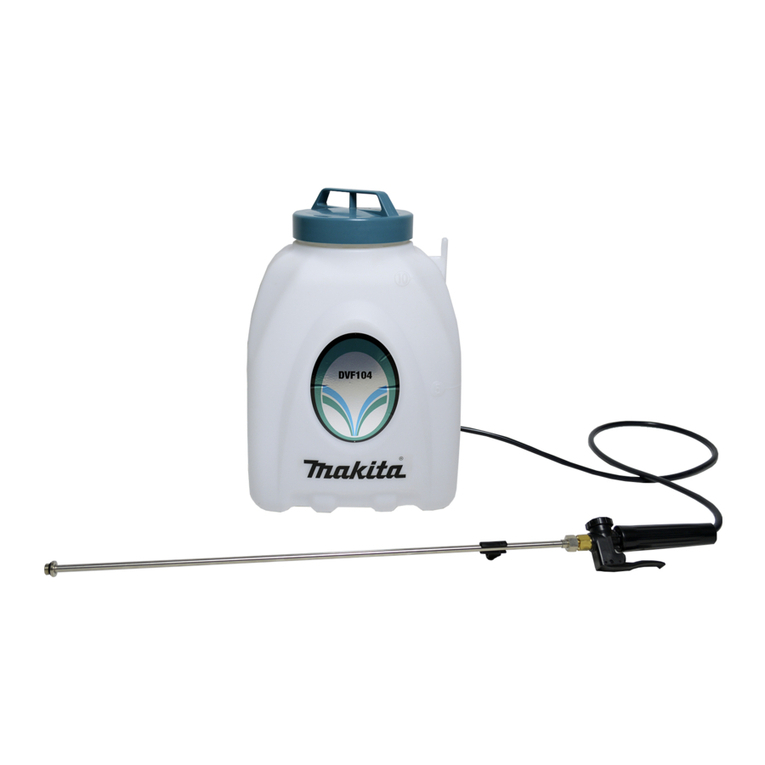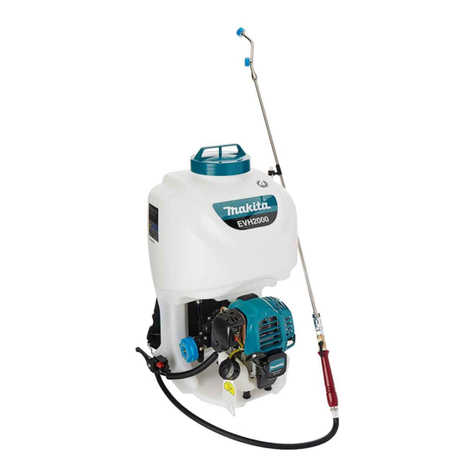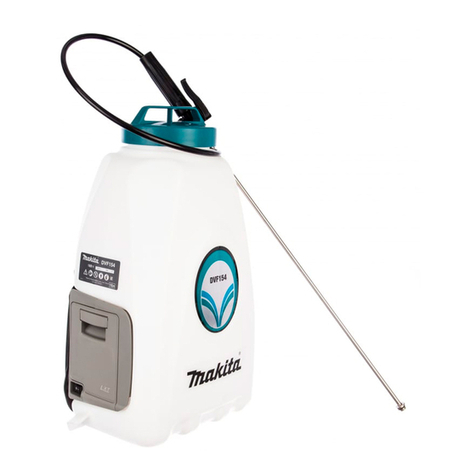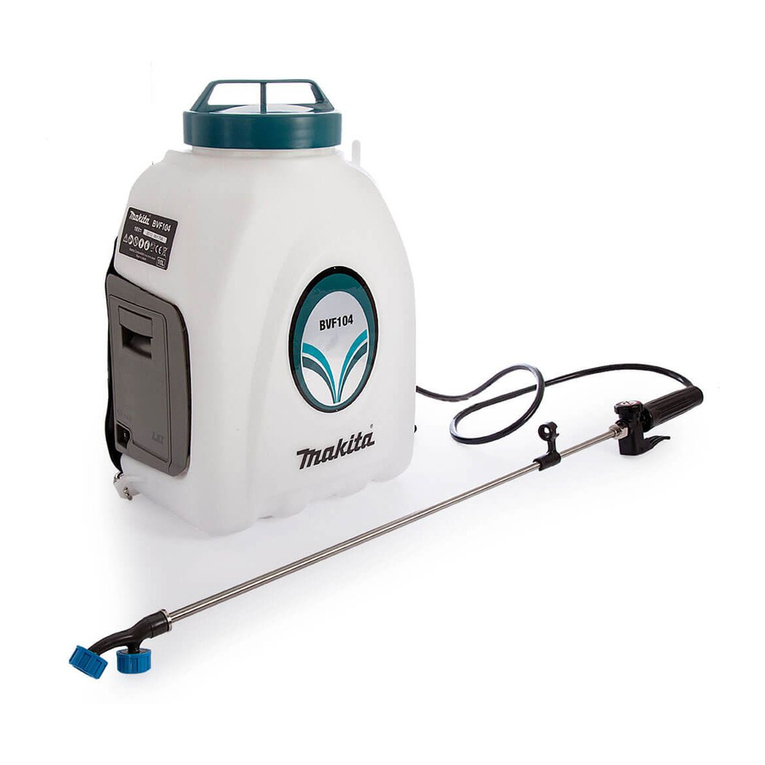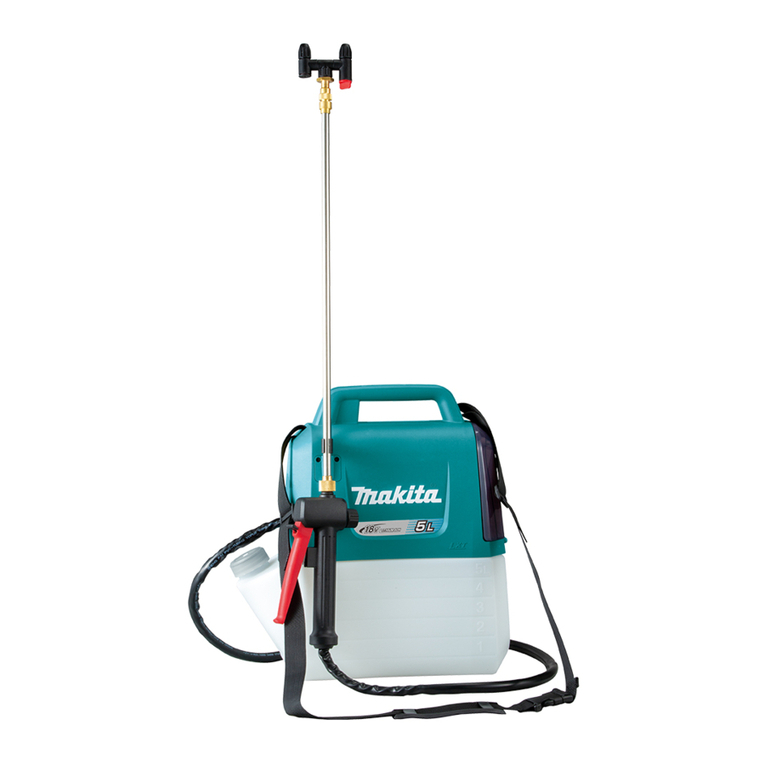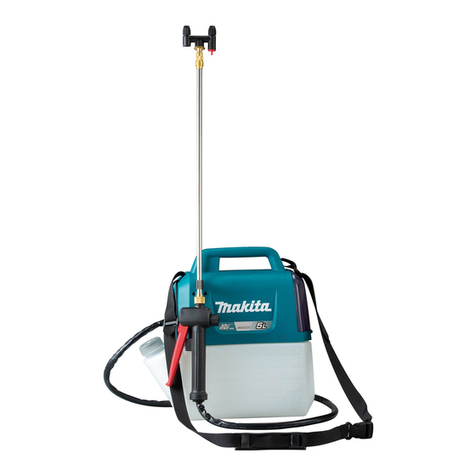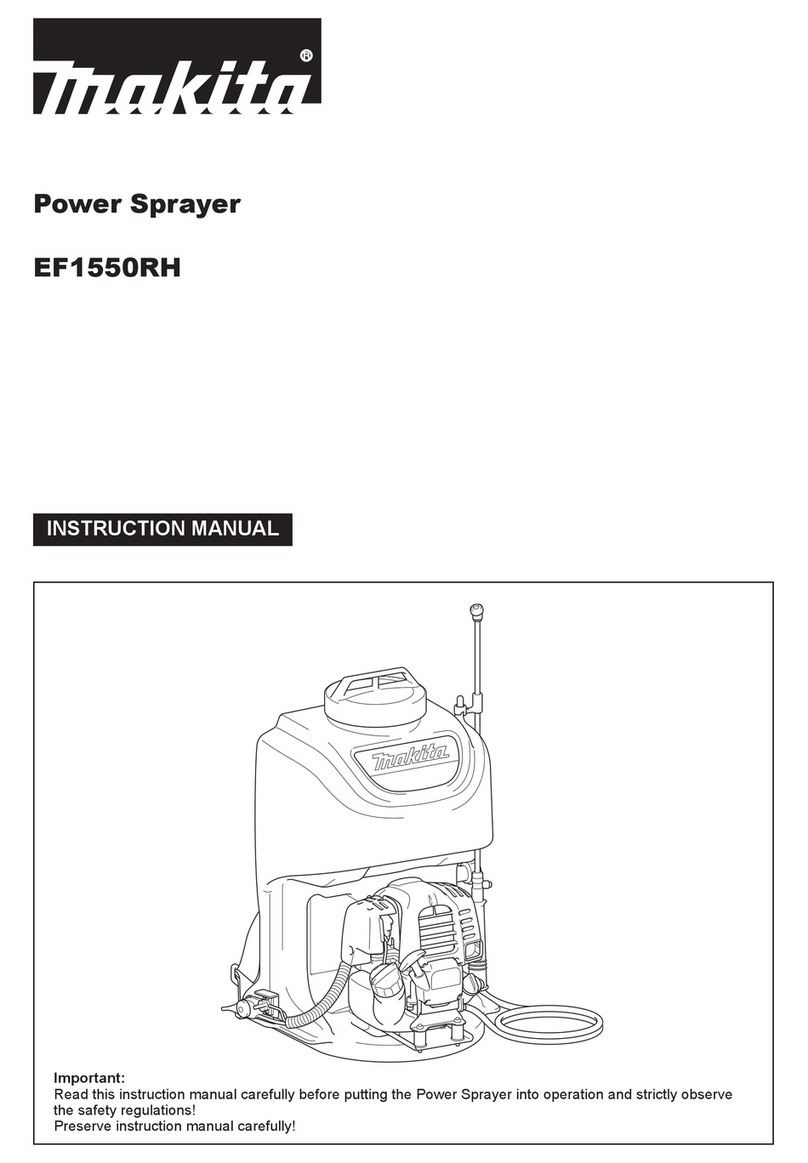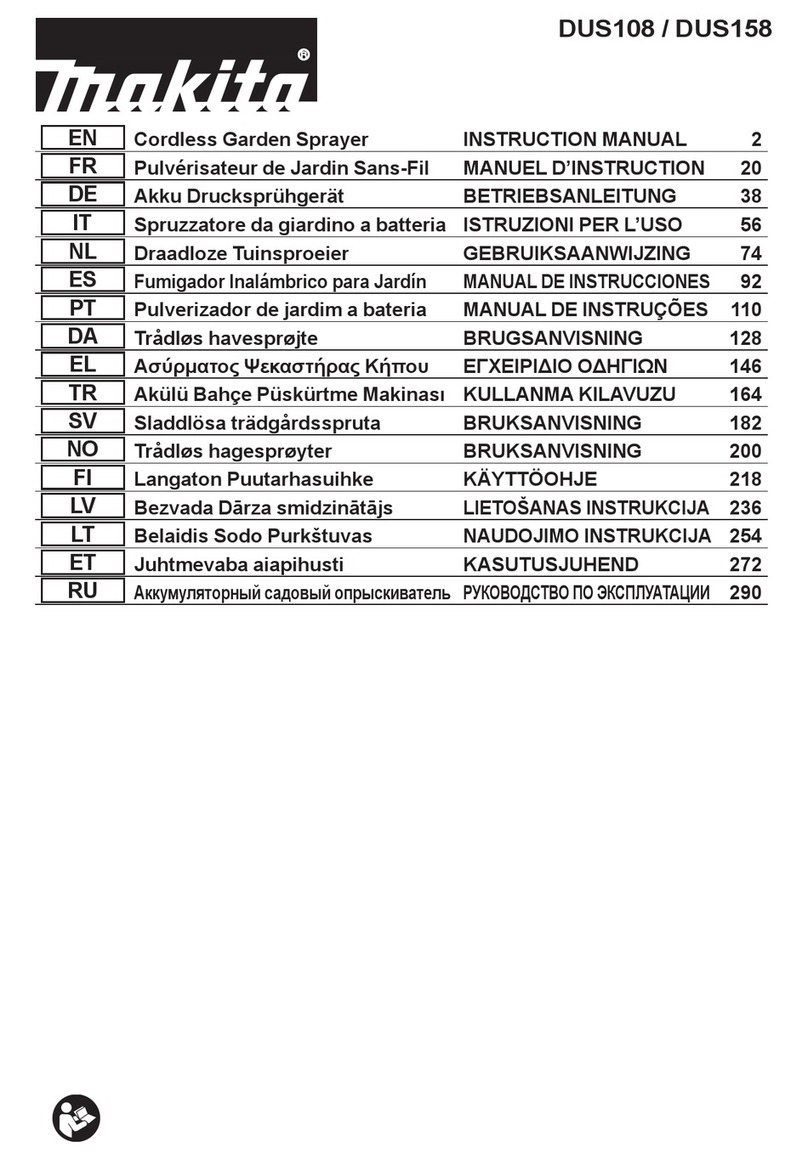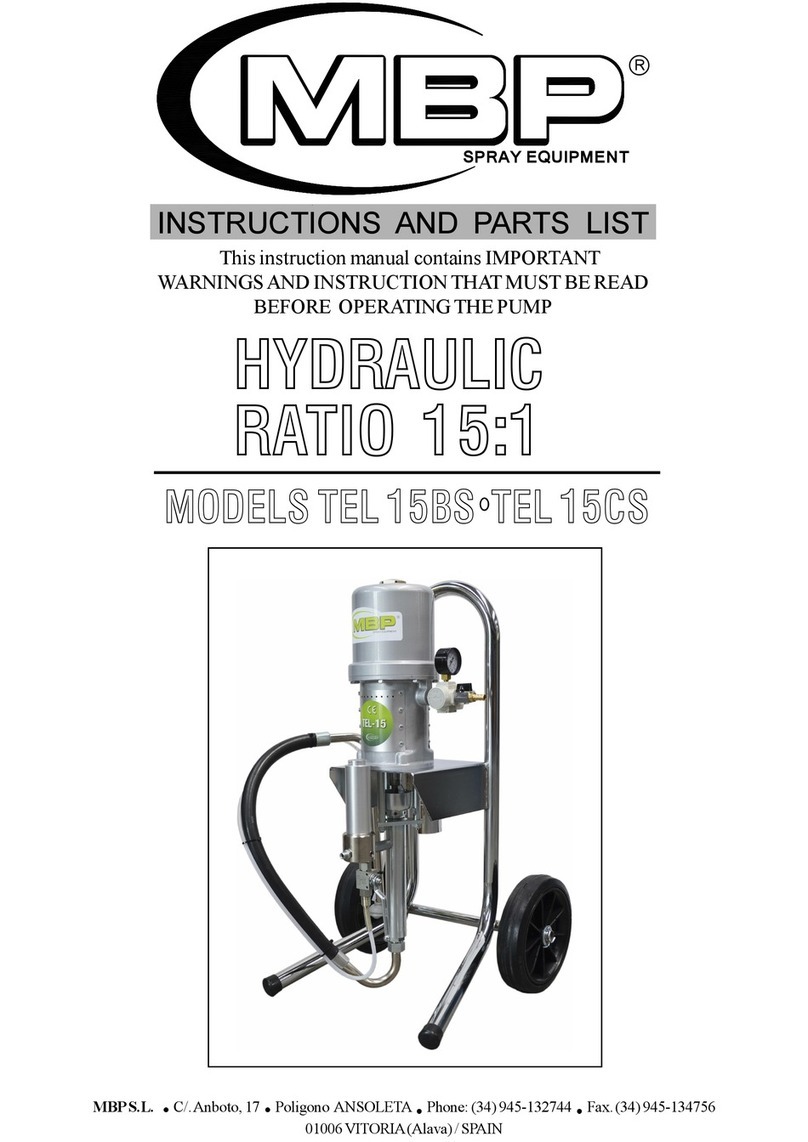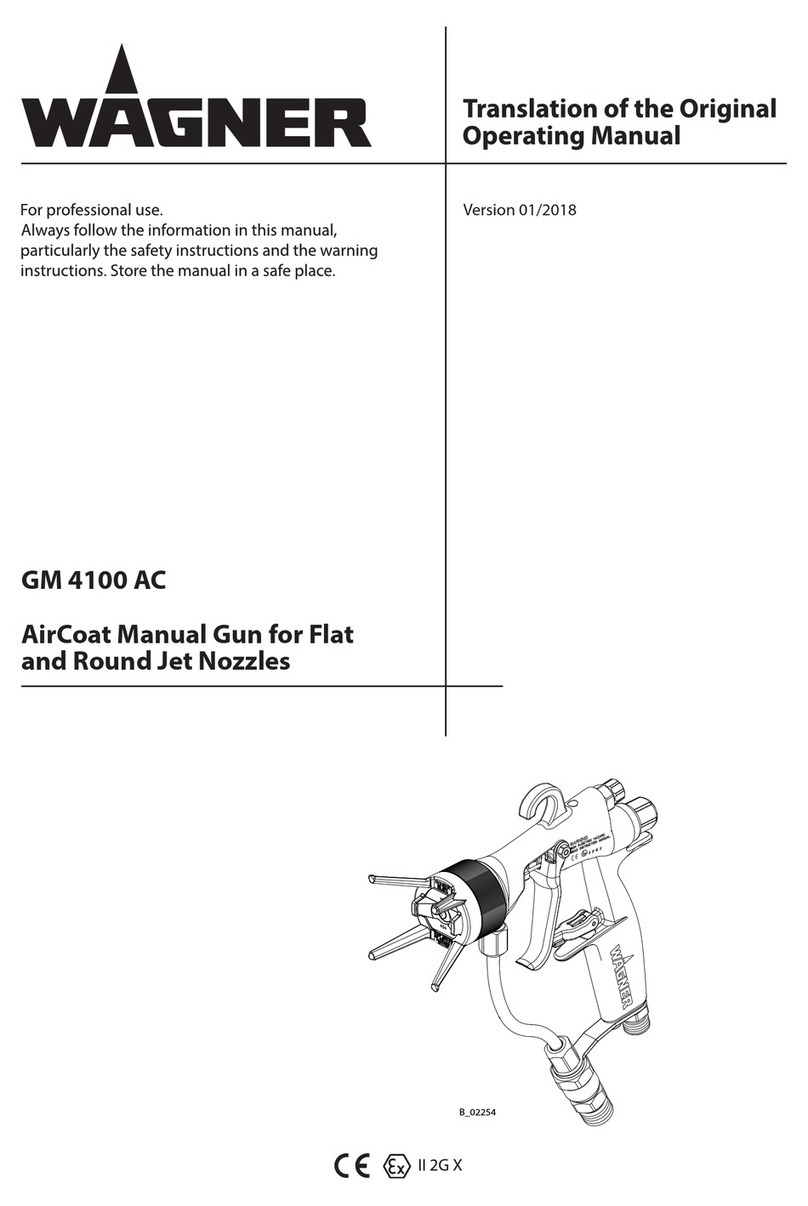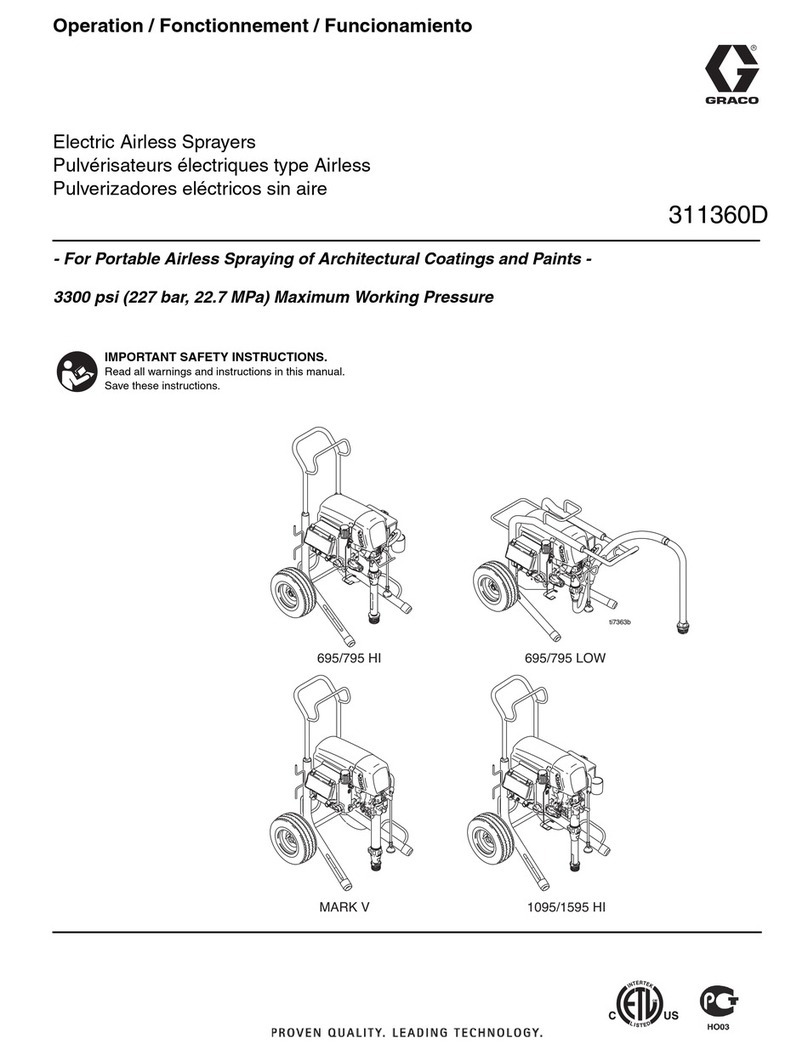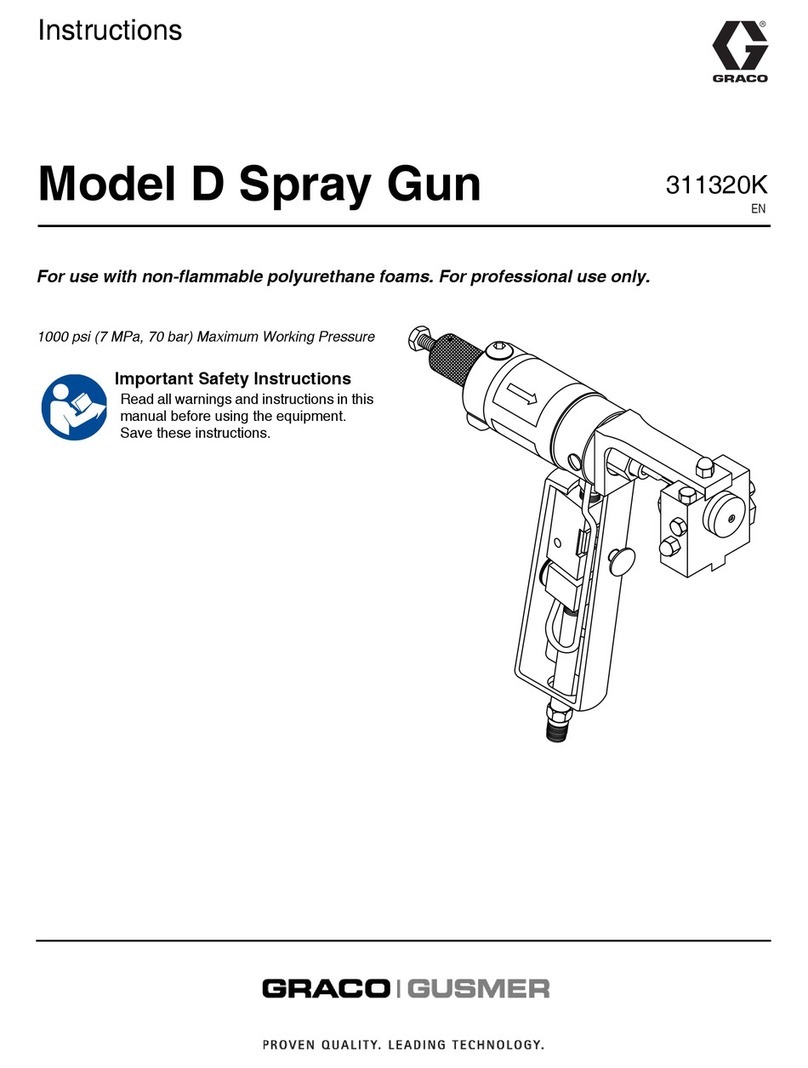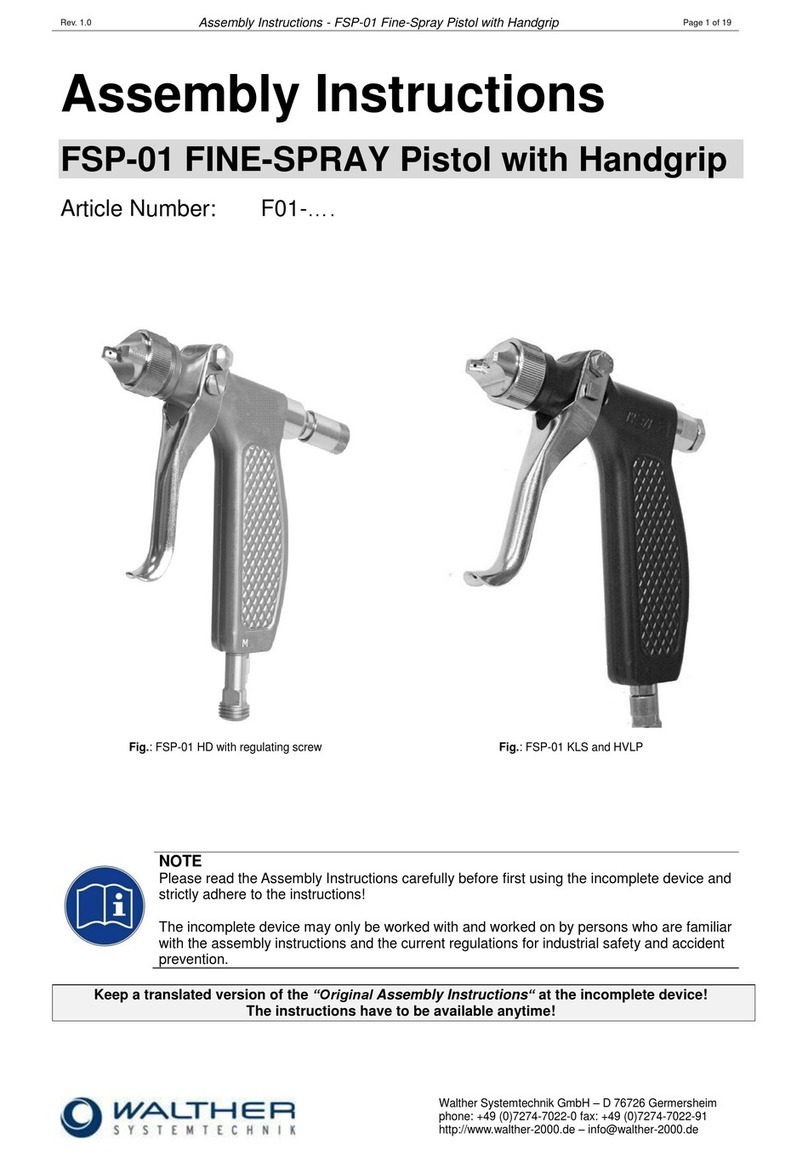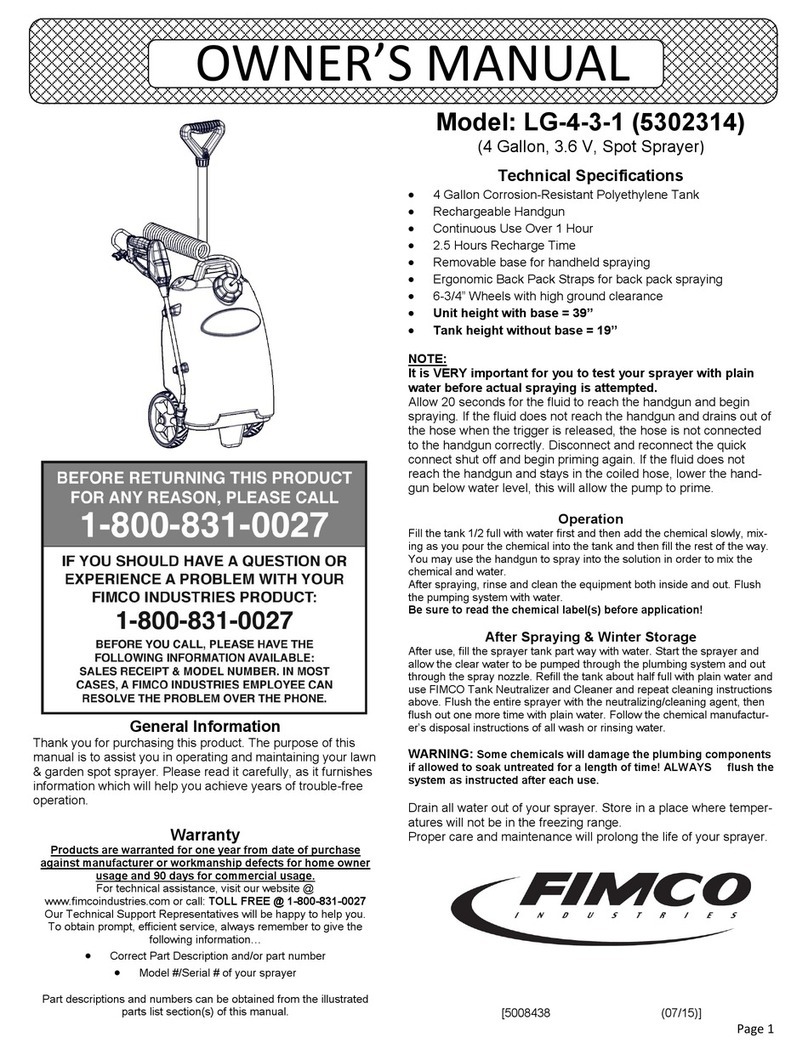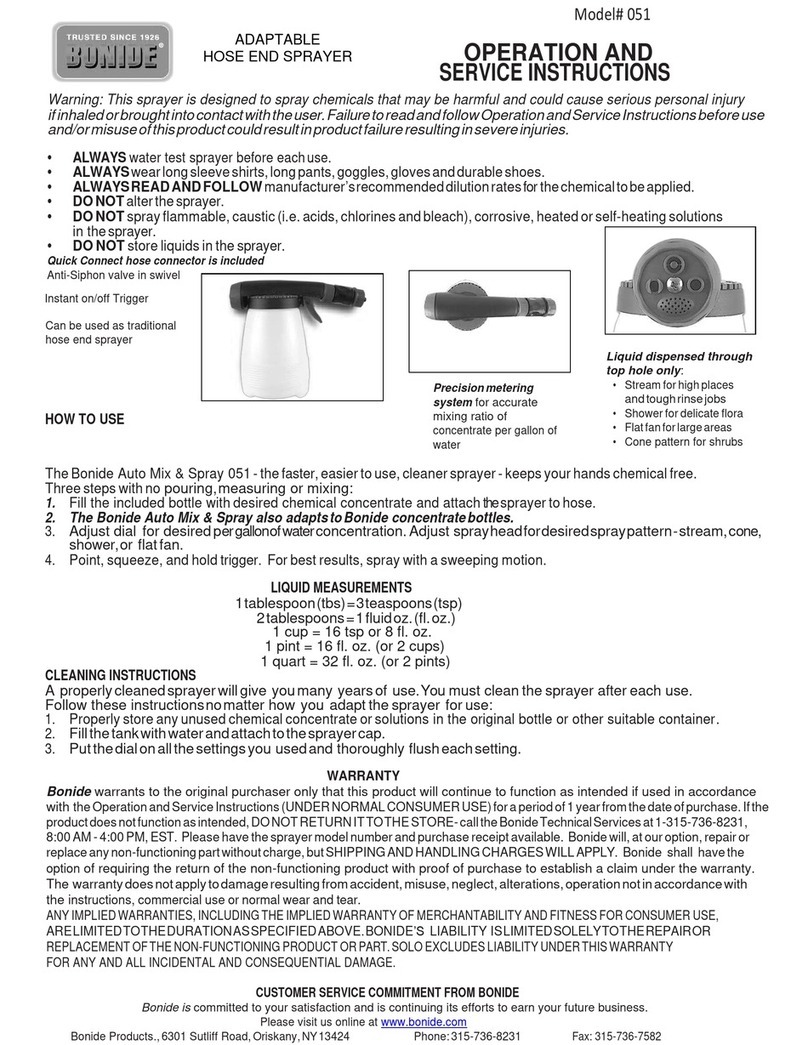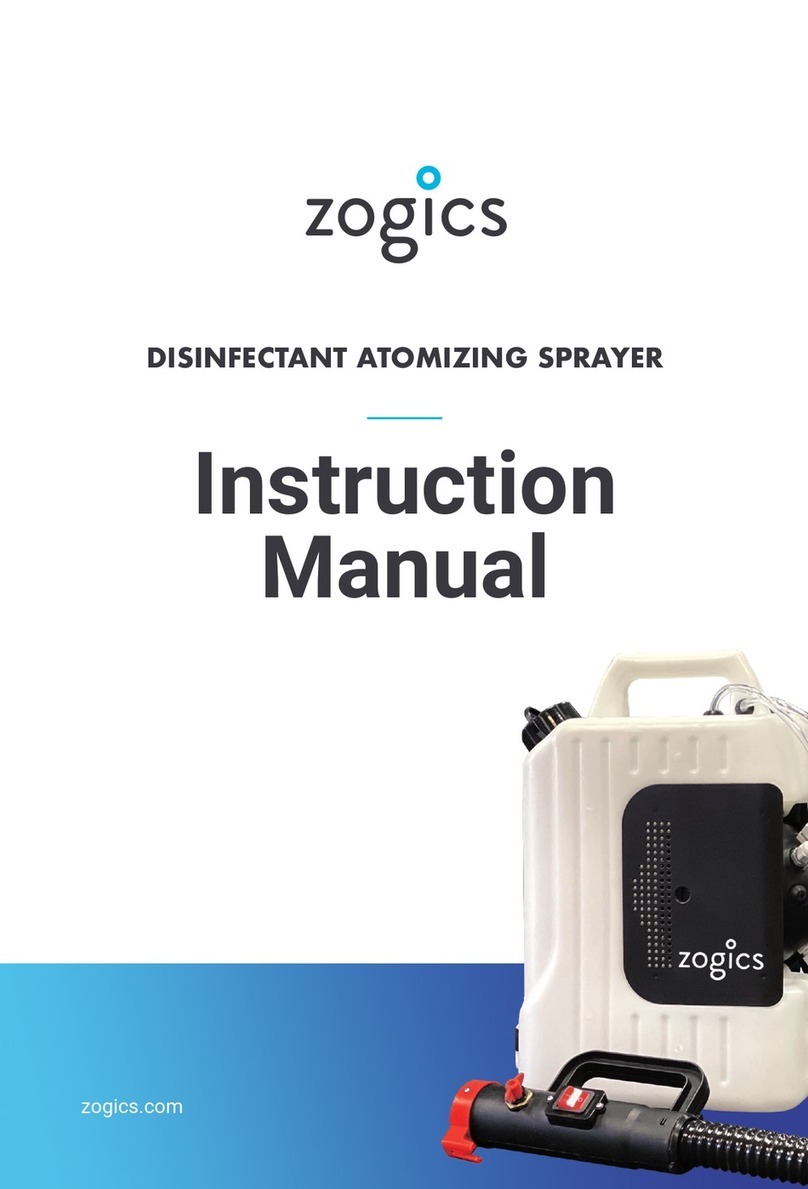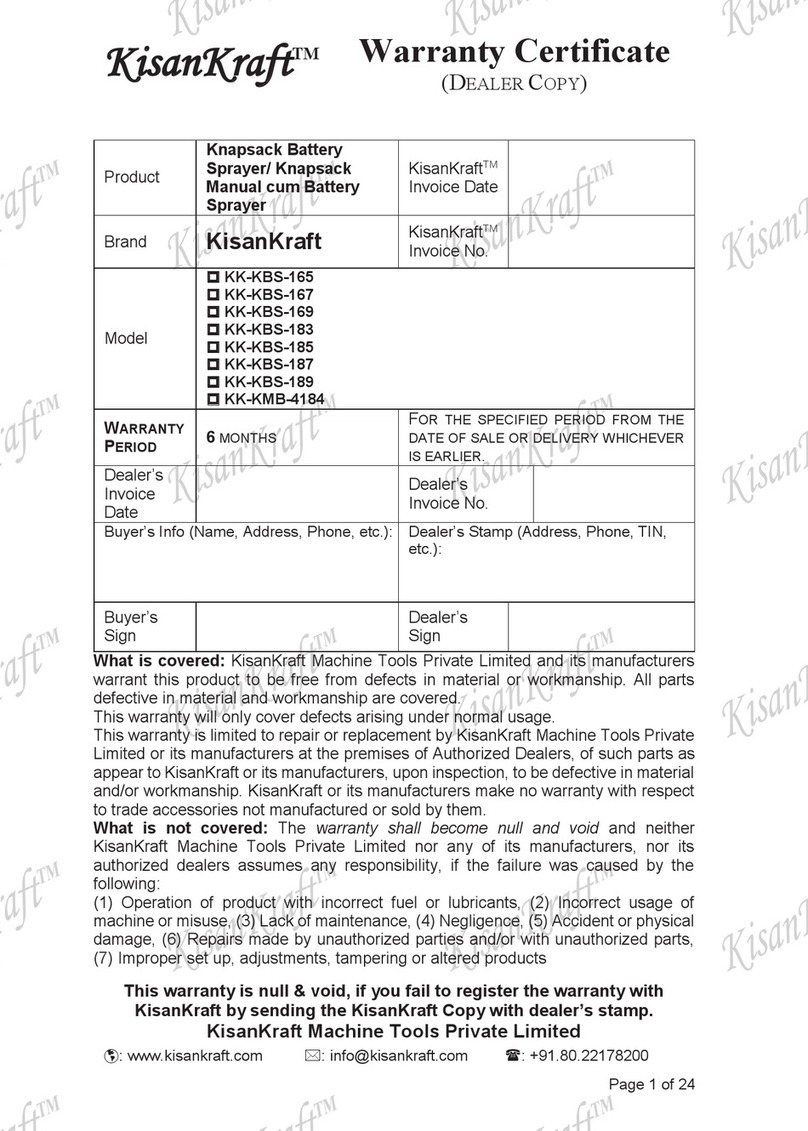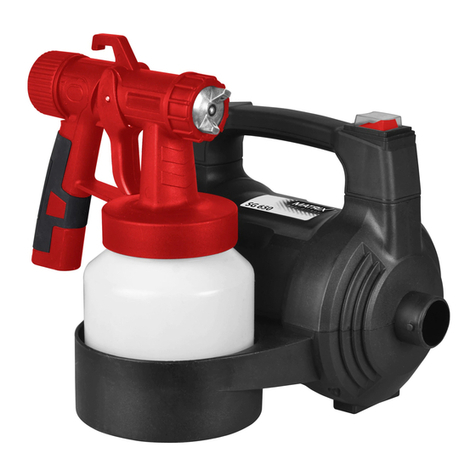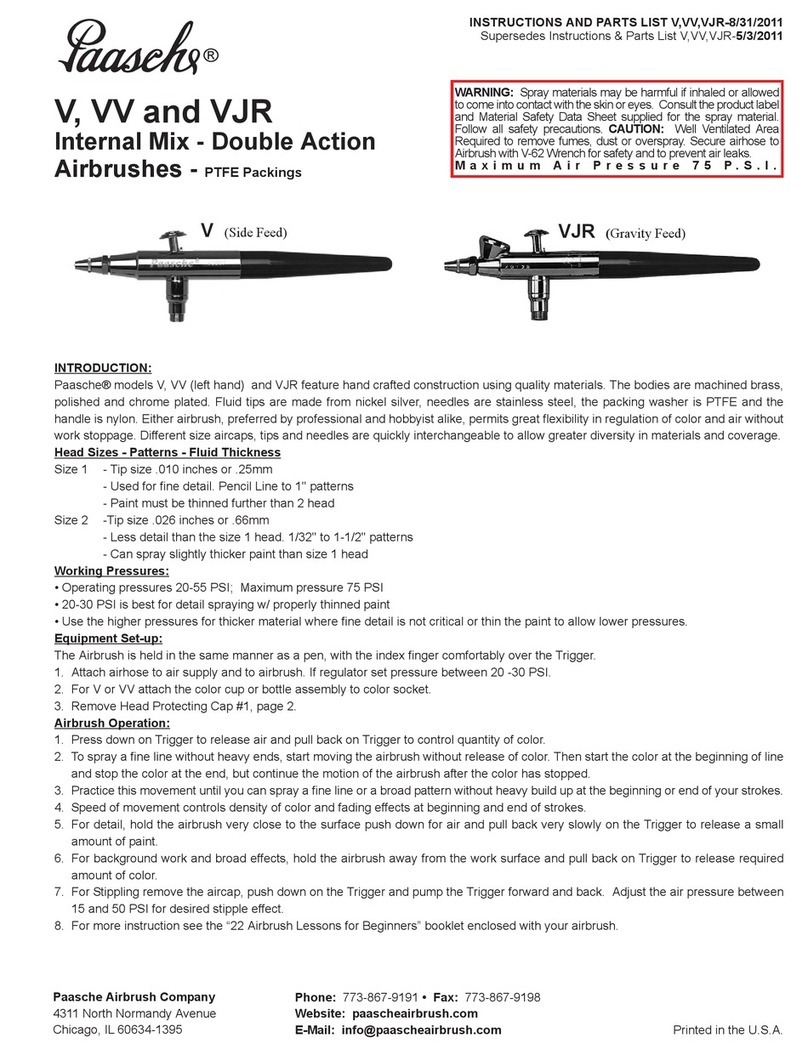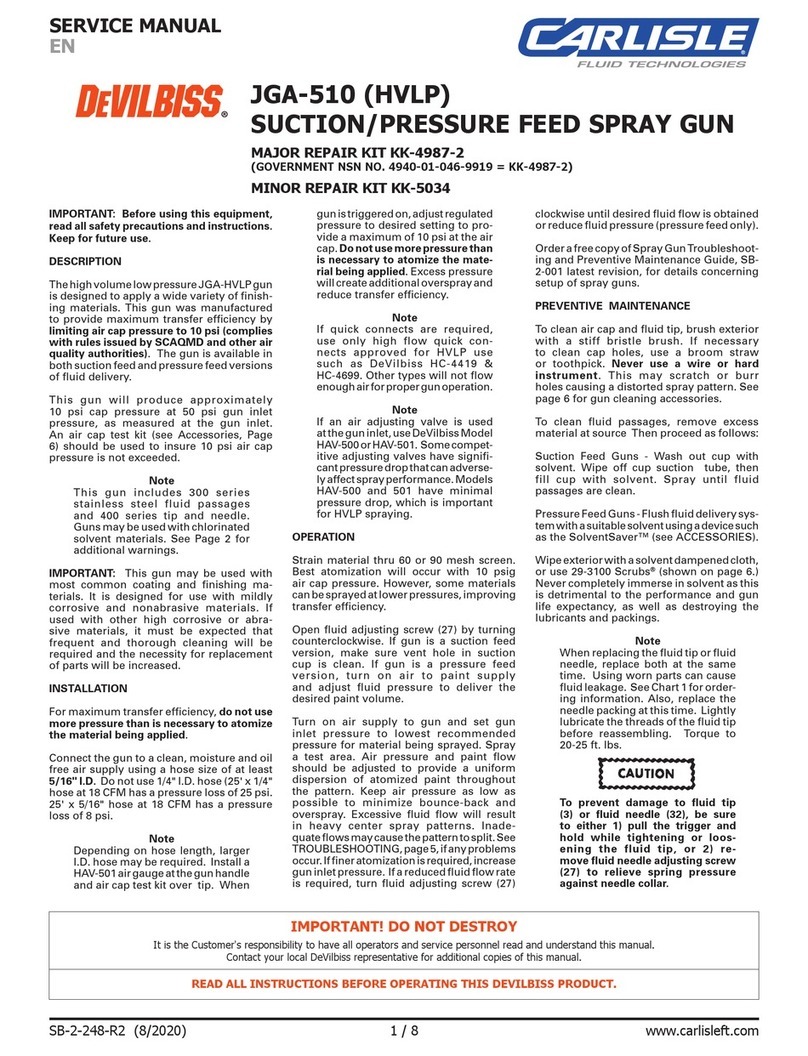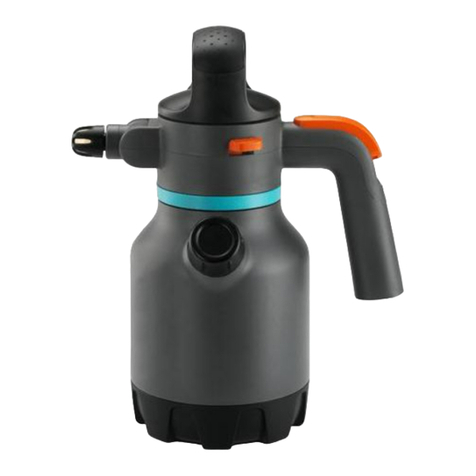
4
And are manufactured in accordance with the following
standards or standardised documents:
EN809, EN60745
The technical documentation is kept by our authorised
representative in Europe who is:
Makita International Europe Ltd,
Michigan, Drive, Tongwell,
Milton Keynes, MK15 8JD, England
12th February, 2009
000230
Tomoyasu Kato
Director
Makita Corporation
3-11-8, Sumiyoshi-cho,
Anjo, Aichi, JAPAN
GEA010-1
General Power Tool Safety
Warnings
WARNING Read all safety warnings and all
instructions. Failure to follow the warnings and
instructions may result in electric shock, fire and/or
serious injury.
Save all warnings and instructions for
future reference.
GEB044-3
SPECIFIC SAFETY RULES
DO NOT let comfort or familiarity with product
(gained from repeated use) replace strict adherence
to garden sprayer safety rules. If you use this tool
unsafely or incorrectly, you can suffer serious
personal injury.
Safety Warnings for Spraying Operation:
1. Do not use the sprayer for any other purpose
than spraying agricultural and horticultural
chemicals for pest and weed control.
2. Concerning the use of chemical sprays, be
sure to thoroughly read the chemical
instructions, in order to become fully
acquainted with toxicities and usage methods.
3. If chemical comes into contact with skin,
immediately wash thoroughly with soap.
4. Firmly close chemical tank lid to prevent
leaking.
5. Never transfer chemical to another container.
6. Always thoroughly wash empty chemical
containers when mixing spray liquid and then
follow chemical manufacturer’s instructions to
correctly dispose of containers at all times.
7. Before using the sprayer, be sure to check
there are no abnormalities, such as
displacement of packing from connector,
looseness of screws, missing components,
and/or cracked/worn/damaged hose.
Using an incomplete sprayer may cause an
accident and/or injury.
8. People not involved in spraying should refrain
from approaching the worksite during
spraying.
9. When transporting a chemical-loaded sprayer
by vehicle, there is a risk of leaking, so always
firmly tighten the chemical tank lid, and secure
the sprayer in an upright position.
10. Never use items such as strongly acidic
chemicals, paints, thinners, gasoline or
benzene with the sprayer, as there is a danger
of burns or fire.
11. Be sure to select the appropriate chemical
(taking into consideration usage method and
effectiveness) to deal with the pest or weed in
question.
12. An inappropriately mixed chemical may harm
humans as well as damage crops/plants.
When mixing chemical, thoroughly read
chemical instructions, and dilute chemical
correctly prior to use.
13. Always mix chemical before loading it into
tank.
14. To prevent inhalation and/or contact with
chemical, be sure to wear safety clothing (hat,
protective goggles, protective mask, rubber
gloves, long-sleeved pest-control jacket, long
trousers and gumboots), so that skin is not
exposed when spraying.
15. Always load the tank with chemical or clean
water when operating the sprayer, as
operating the sprayer with an empty tank may
damage the pump.
16. If the sprayer stops running, or an abnormal
sound is emitted, immediately switch OFF the
sprayer, and discontinue use.
17. Constantly be aware of wind direction while
spraying, to ensure spraying from upwind to
downwind, in order to prevent direct chemical
contact with body. Also, be careful to keep
chemical from reaching surroundings, and
stop using the sprayer when the wind is
strong.
18. As there is a risk of chemical poisoning when
spraying in a greenhouse, always ventilate
while spraying.
19. Avoid spraying when atmospheric
temperature is high.
20. Avoid prolonged operation of sprayer.
Whenever possible, rotate operators.
21. If even a slight headache or dizziness, etc.,
occurs, stop spraying work immediately, and
consult a doctor. Moreover, be sure to clearly
inform the doctor of the name of the
agrochemical being used, and the operating
circumstances.
